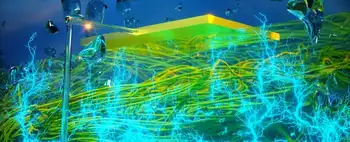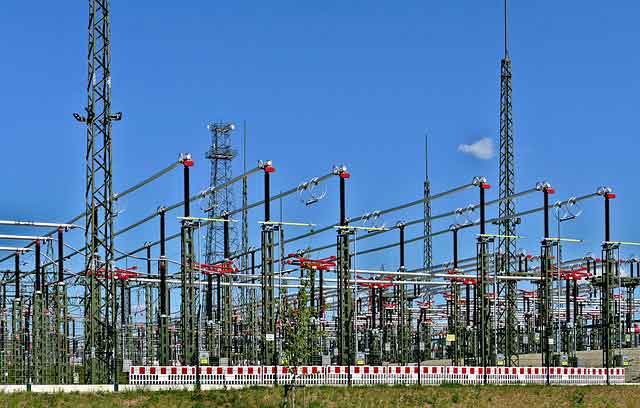Fuel cells give hope for a cleaner tomorrow
By Calgary Herald
CSA Z462 Arc Flash Training
Our customized live online or in‑person group training can be delivered to your staff at your location.

- Live Online
- 6 hours Instructor-led
- Group Training Available
To test his reasoning, Grove built a device that combined hydrogen and oxygen and produced electricity. In the process, Grove built the world's first gas battery, a device we now know as the fuel cell. In an ironic twist, interest in the fuel cell waned with the dawning of the fossil fuel age.
The fuel cell enjoyed something of a renaissance in the 1960s when NASA was planning prolonged space flight. To succeed, the spacecraft would need a source of electricity. Batteries and solar cells were considered, but ruled out because of size and weight issues.
Enter the fuel cell — a compact unit capable of satisfying the electrical requirements while using the hydrogen and oxygen already aboard the spacecraft. It also solved another problem: As the fuel cell's only by-product is water, it provided a precious commodity — clean drinking water. Today, they remain an integral part of the space program.
Using a fuel cell to power a vehicle still presents an uphill challenge. Reducing the size and weight of the cell stack while maintaining or improving its power production is important for both packaging and design reasons. A smaller stack frees up the space needed for the other components (the electric motor and so on) and allows it to be used in a smaller vehicle. Likewise, improving the power output is critical if the stack is to be used in commercial vehicles.
And while the cost of building a fuel cell stack has decreased tenfold in the past few years, the price is still too high for universal acceptance. In short, until the fuel cell enjoys the benefit of mass production, it will remain too costly for everyday use.
The third thorn is life expectancy. At present, most fuel cells have an operational life of about 1,500 hours (or approximately three years of normal use) before there is an appreciable decrease in performance (roughly a 15-per-cent drop in output). Some manufacturers, however, are already beginning to break this barrier. Kia will introduce a fuel cell with a life cycle of 3,000 hours — the goal for the production unit is beyond 5,000 hours, which will give it a life cycle of 10 years.
The good news is the fuel cell offers significant advantages. So many, it justifies the optimism and billions of dollars being invested in its future. First, fuel cell-powered vehicles are at least 50 per cent more economical to operate than a gasoline-powered engine because of the efficiency with which the fuel is used. A conventional gasoline vehicle has a tank-to-wheel efficiency of 16 per cent — inefficient combustion, friction and mechanical losses being the main culprits. Conversely, a fuel cell triples the return, boasting a tank-to-wheel efficiency of 48 per cent.
Second, and more importantly, there is no pollution whatsoever. In the case of a fuel cell that's fed pure hydrogen the only byproduct is water. This eliminates the nitrogen oxides (NOx), hydrocarbon and greenhouse gas emissions that are of such concern. Factor in the ability to produce hydrogen from renewable energy sources such as the sun, wind, water and biomass, and its use as a source of energy is very compelling.
Currently, the list of automakers testing fuel cells is extensive. However, there are a couple of examples that illustrate how well things are going.
Ford has a fleet of 30 Focus FCVs (fuel cell vehicle) undergoing real world testing — five are based in Vancouver. To date, the experience has been positive, and this after the fleet has logged over 1.2-million test kilometres.
Ford also has the HySeries fuel cell system. The main 336-volt battery is charged by power grid. The Edge test mule then runs on this power until the battery reaches a 40-per-cent state of charge. At this point, the fuel cell powers up and recharges the battery. The key difference is that the fuel cell is used as a generator and not as the primary power supply. The combined battery/fuel cell range is 360 kilometres.
The Canadian success story comes from General Motors — the Oshawa, Ont.-built Chevrolet Equinox Fuel Cell. In all, 100 units have been built and are in service in the United States. I have driven all of the current fuel cell-powered vehicles. The Equinox FC is the equal of them all and, in many respects, ahead of most. The reason is simple — it rides and drives like any other vehicle. When you're dealing with such a complex package this is the biggest compliment of all.
The future of the fuel cell is bright in spite of the hurdles. Eventually, they will serve homes and businesses, as well as automobiles, and without the current environmental impact. Think of it as clean power that is as ecologically sound as the science behind it.
Understanding how a fuel cell functions is easier if you think of it as a distant relative to the ordinary 12-volt battery in your car — with one significant difference. Where a battery must be recharged whenever electricity is drawn from it, a fuel cell will provide power for as long as it's fed a constant supply of fuel. This calls for a supply of hydrogen to be combined with the oxygen from the air we breathe.
In the case of a proton exchange membrane or PEM fuel cell — the most popular type — the chemical reaction is a relatively simple one. As with a battery, the fuel cell consists of an anode, a cathode, precious metal catalysts (usually platinum) and a special polymer membrane that doubles as the electrolyte.
Hydrogen gas is fed into the anode side of the cell where it reacts with the catalyst. This separates the hydrogen into electrons and protons (hydrogen ions). What makes the whole lot tick is the fact that the electrons are too large to pass through the permeable membrane and so they are forced to flow through an external electric circuit to the cathode (the flow of electrons is referred to as electrical current). This side of the cell supplies the power needed by vehicle's electric motor.
Meanwhile, the hydrogen ions are small enough to pass through the membrane where, again with the help of a catalyst, they combine with the oxygen and electrons (returning from the motor) on the cathode side of the cell to produce water.
This is a simple overview of a single cell. To produce the amount of power required by the vehicle many of these single cells are bundled together to form the so-called fuel cell stack.
The low-voltage DC power produced is then converted into the high voltage AC current needed by the electric motor.











